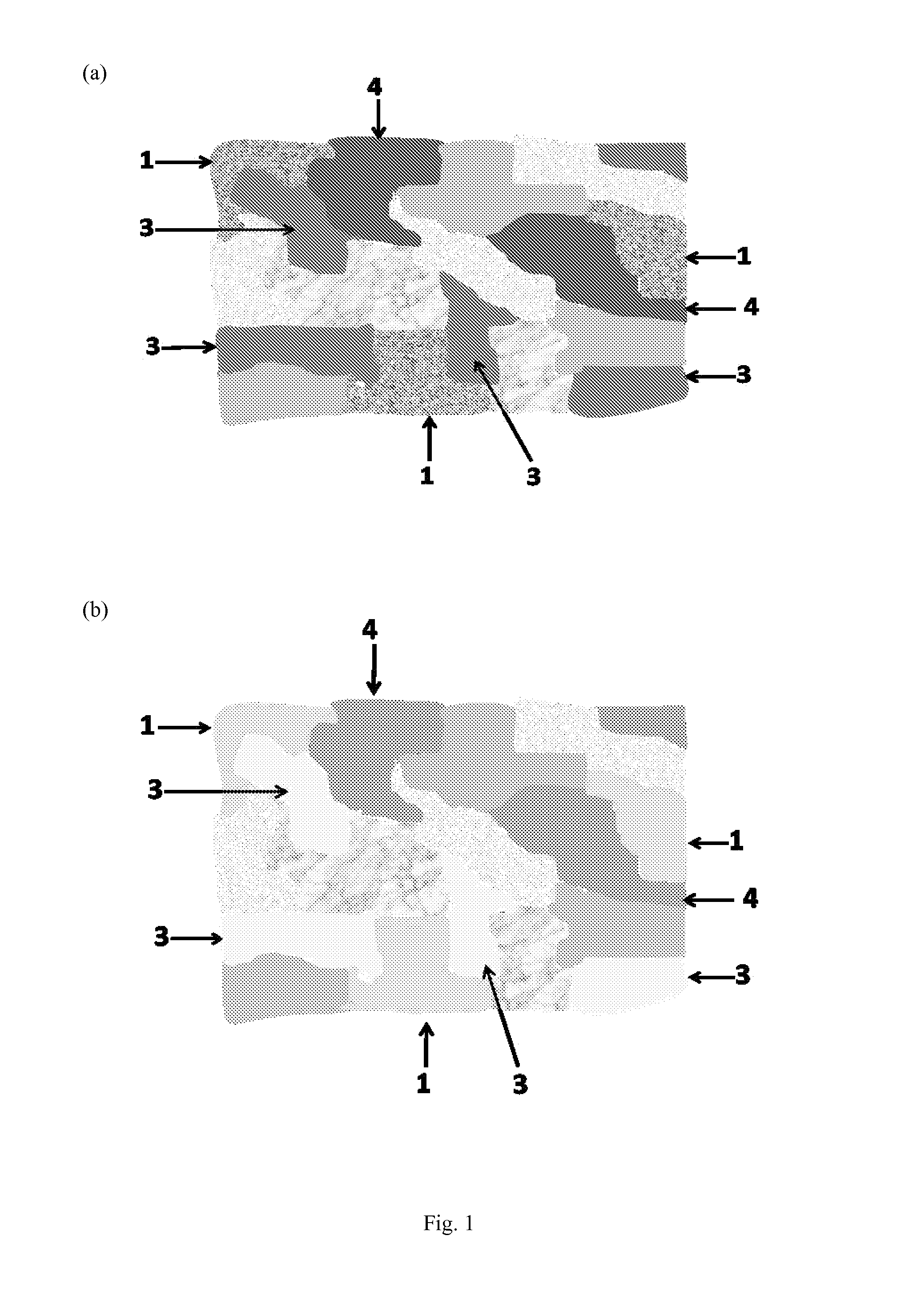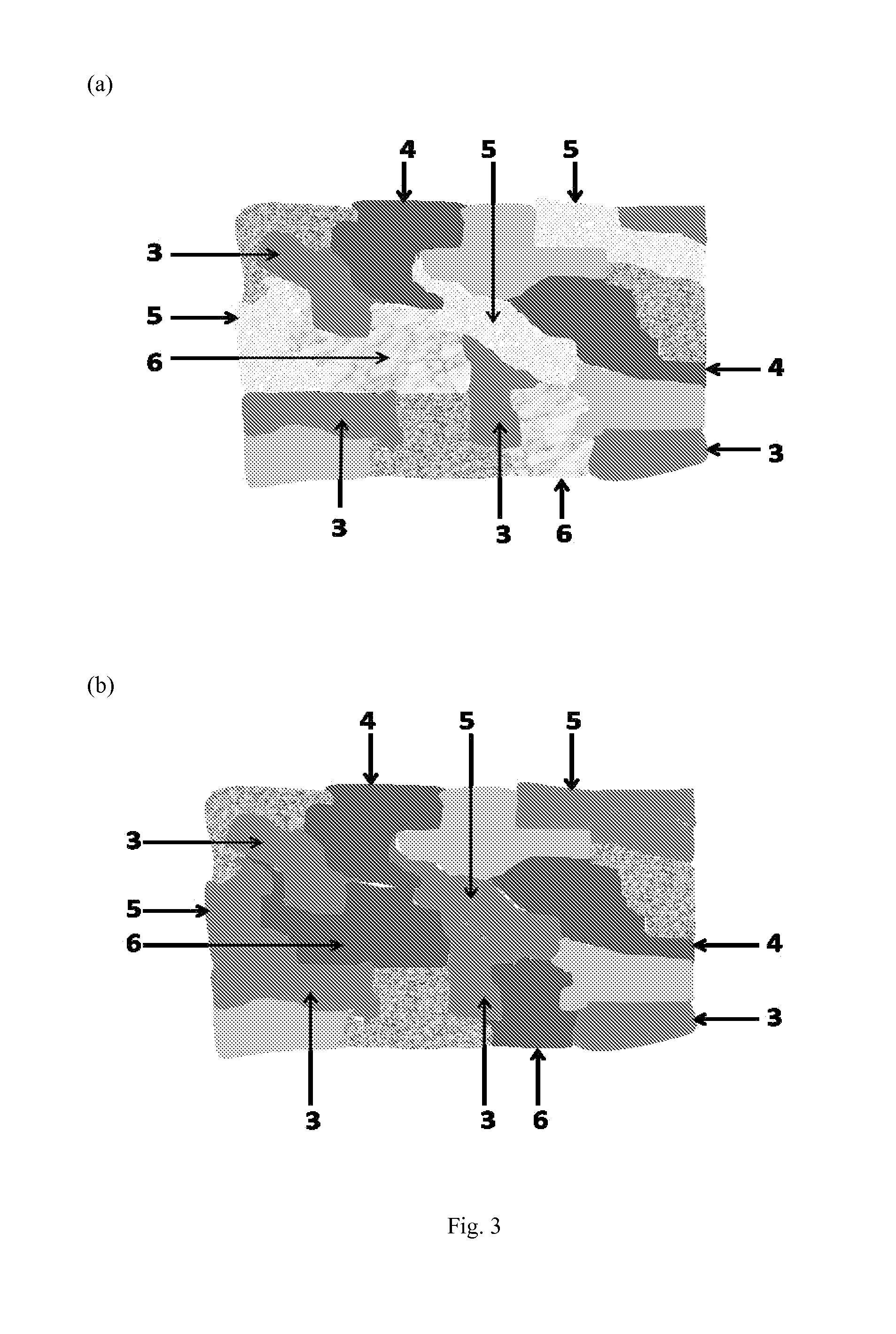Chromic luminescent compositions and textiles
a composition and composition technology, applied in the direction of dyeing process, weaving, other domestic objects, etc., can solve the problems of not enabling brightness variations or additionally, the frequency of patterns, and the use of compositions that are substantially limited, and are unlikely to be as effective throughout the 24 hr day/night cycl
- Summary
- Abstract
- Description
- Claims
- Application Information
AI Technical Summary
Problems solved by technology
Method used
Image
Examples
example 1
Preparation of a Chromic Luminescent Composition Comprising One Non-Luminescent Material and One Luminescent Material—Formulation 1
[0040]Dispersion A: A 0.2% dispersion of a yellow luminescent material, TerasilFlavin 10GFF (Huntsman, λmax=450 nm; εmax=505 nm) in a binder Permax 232 (Lubrizol), was prepared by adding 0.100 g of the luminescent material to a mortar followed by the addition of 1.00 g of a dispersant, Pluronic 10R5 (Sigma-Aldrich). This mixture was then ground with a pestle until a uniform dispersion resulted. Thereafter, 50.0 g of Permax 232 was gradually added to the mixture. The mixture was then subsequently ground until a uniform dispersion resulted. This mixture was then placed in a Branson 2200 sonicator set at a temperature of 40° C. for 15 minutes with occasional swirling by hand.[0041]Dispersion B: A 5% dispersion of the non-luminescent material ORCOBRITE Pigment Violet 4BN concentrate (Organic Dyestuffs Corp., λmax=560 nm) was prepared by adding 5.00 g of the ...
example 2
Preparation of a Chromic Luminescent Composition Comprising Two Non-Luminescent Materials and One Luminescent Material—Formulation 2
[0042]Dispersion C: 9.0 g of a 0.2% dispersion of a blue non-luminescent material, Solvent Blue 38 (Sigma-Aldrich, λmax=675 nm) in a binder Permax 232, was prepared by adding 0.100 g of the non-luminescent material to a mortar followed by the addition of 1.00 g of a dispersant, Pluronic 10R5. This mixture was then ground with a pestle until a uniform dispersion resulted. Thereafter, 50.0 g of Permax 232 was gradually added to the mixture. The mixture was then subsequently ground until a uniform dispersion resulted. This mixture was then placed in a Branson 2200 sonicator set at a temperature of 40° C. for 15 minutes with occasional swirling by hand.
Dispersion C was added to Formulation 1 and sonicated at 40° C. for 15 minutes until a uniform dispersion resulted to yield the chromic luminescent composition.
example 3
Preparation of a Chromic Luminescent Composition Comprising Two Non-Luminescent Materials and Two Luminescent Materials—Formulation 3
[0043]Dispersion D: A 20% dispersion of the non-luminescent material ORCObrite Pigment Violet 4BN concentrate (Organic Dyestuffs Corp., λmax=560 nm) was prepared by adding 5.00 g of the non-luminescent material to 20.0 g of the Permax 232 and then placed in a sonicator for 15 minutes at 40° C. with occasional swirling by hand until a uniform dispersion results.[0044]Dispersion E: A 20% dispersion of the non-luminescent material ORCObrite Pigment Blue 3GN (Organic Dyestuffs Corp.) was prepared by adding 5.00 g of the non-luminescent material to 20.0 g of the Permax 232 and placed in a sonicator for 15 minutes at 40° C. with occasional swirling by hand until a uniform dispersion results.[0045]Dispersion F: 0.175 g of yellow luminescent material, Lumogen F083 (BASF), 7.5 g of dispersant, Polysorbate 85 (Chemical Connection), 0.088 g of blue luminescent ma...
PUM
| Property | Measurement | Unit |
|---|---|---|
| temperature | aaaaa | aaaaa |
| chromic luminescent composition | aaaaa | aaaaa |
| absorption spectra | aaaaa | aaaaa |
Abstract
Description
Claims
Application Information
 Login to View More
Login to View More - R&D
- Intellectual Property
- Life Sciences
- Materials
- Tech Scout
- Unparalleled Data Quality
- Higher Quality Content
- 60% Fewer Hallucinations
Browse by: Latest US Patents, China's latest patents, Technical Efficacy Thesaurus, Application Domain, Technology Topic, Popular Technical Reports.
© 2025 PatSnap. All rights reserved.Legal|Privacy policy|Modern Slavery Act Transparency Statement|Sitemap|About US| Contact US: help@patsnap.com



